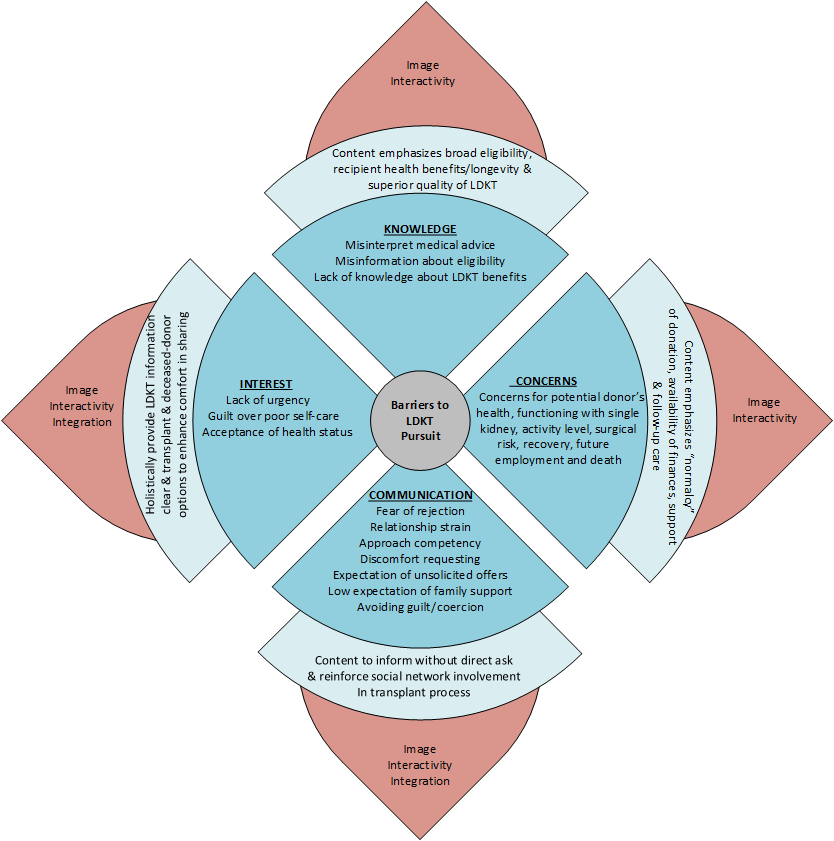African American Patient Perceptions of Live Kidney Donation and Educational Health Animations
R. E. Seibert1, M. Keller2, B. Dolph3, T. H. Feeley4, L. K. Kayler3
1Department of Epidemiology and Environmental Health, State University of New York at Buffalo, Buffalo, NY, 2Department of Community Health and Health Behavior, State University of New York at Buffalo, Buffalo, NY, 3Transplant and Kidney Care Regional Center of Excellence, Erie County Medical Center, Buffalo, NY, 4Department of Communication, State University of New York at Buffalo, Buffalo, NY
Meeting: 2020 American Transplant Congress
Abstract number: 564
Keywords: African-American, Donation, Living donor, Psychosocial
Session Information
Session Name: Kidney Living Donor: Other II
Session Type: Oral Abstract Session
Date: Saturday, May 30, 2020
Session Time: 3:15pm-4:45pm
 Presentation Time: 3:51pm-4:03pm
Presentation Time: 3:51pm-4:03pm
Location: Virtual
*Purpose: Disparities in pursuit of living donor kidney transplantation (LDKT) among African Americans remain challenging to overcome. Animation-based education is a promising approach to increasing accessibility and dissemination of information. A more nuanced understanding of AA barriers to pursuit of LDKT and the practical utility of educational health animations to deliver educational benefits is needed.
*Methods: We held 8 focus groups and 31 one-on-one interviews with 44 AA adult kidney transplant candidates, recipients, and their caregivers (when available) to examine barriers to pursuing LDKT and to identify important content and design features of health animations to improve capacity related to those barriers. Interviews were recorded, transcribed, and qualitatively analyzed by two independent coders using an inductive constant comparative approach.
*Results: The mean age of participants was 53.6 years (SD=12.3), 25% were transplant candidates, 70% were recipients, and 5% were caregivers. Four barriers to pursuit of LDKT emerged: (1) interest in LDKT, (2) knowledge about LDKT, (3) communication about kidney donation, and (4) concerns about donor outcome. Using the Three I’s Framework and it’s components of image, interactivity and integration, health animations can be specifically designed to address each of the stated barriers above to provide educational benefits. The motivational moving image, the ability to choose a specific topic of interest to learn and stop and start the video at a specified point, and the sharing capability among family/friends and other learning techniques are especially useful characteristics of the health animations.
*Conclusions: Our research identifies salient barriers to AA pursuit of LDKT and, through the lens of the Three I’s Framework, describes the practical utility of animation-based learning to deliver didactic benefits to the user.
To cite this abstract in AMA style:
Seibert RE, Keller M, Dolph B, Feeley TH, Kayler LK. African American Patient Perceptions of Live Kidney Donation and Educational Health Animations [abstract]. Am J Transplant. 2020; 20 (suppl 3). https://atcmeetingabstracts.com/abstract/african-american-patient-perceptions-of-live-kidney-donation-and-educational-health-animations/. Accessed December 20, 2025.« Back to 2020 American Transplant Congress

